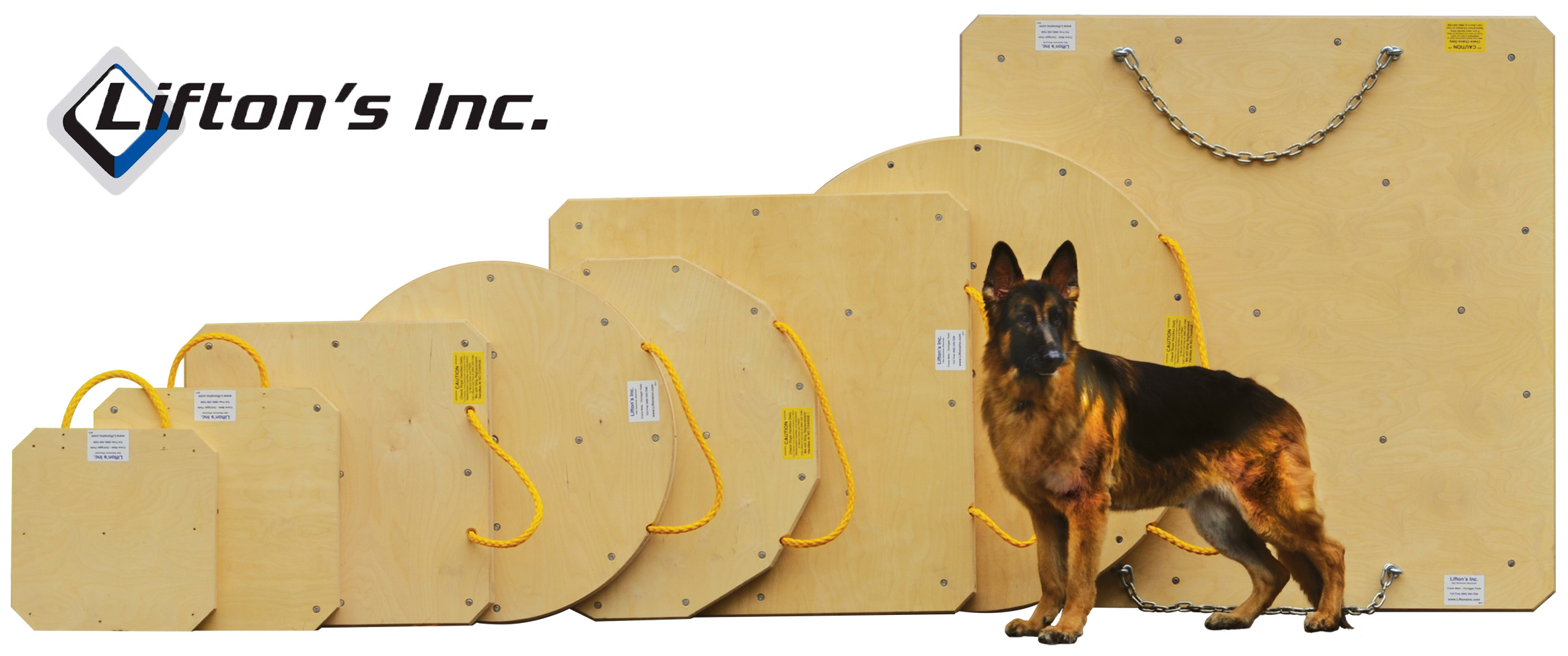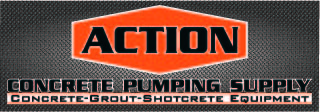| Todd | 01-03-2012 | comment profile send pm notify |
|
Very cool operator, nice pump and a great day to pump concrete. |
||
| Todd | 01-03-2012 | reply profile send pm notify |
|
|
||
| Todd | 01-03-2012 | reply profile send pm notify |
|
|
||
| Todd | 01-03-2012 | reply profile send pm notify |
|
|
||
| Todd | 01-03-2012 | reply profile send pm notify |
|
The only think I dont understand is why they dont have a link to ConcretePumping.com on their web page. |
||
| Todd | 01-03-2012 | reply profile send pm notify |
|
One thing I did notice is this operator is not using the legal limit of cribbage. Owners manual is a good read. |
||
| Dipstick | 01-04-2012 | reply profile send pm notify |
|
that is indeed little dunnage.. I didn't even have so small pads on my 52m.. Smalest I had where twice the size and I only used those in combination with wood.. But lets think he knows what he's doing... The 52m I drove tipped over 3 times in the 4 years after I left.. There are still lots of operators that underestimate the weight on the outriggers on the big pumps... I always say its a big step from a 45m to a 52m but some don't believe it untill they learn it the hard way.... |
||
| Todd | 01-04-2012 | reply profile send pm notify |
|
I just don't want people to see these pictures and think that's the way it is done |
||
| Wildbill83 | 01-04-2012 | reply profile send pm notify |
|
Not to start a pissin match with anybody but i did work for vista ridge a number of years ago and they are a very good company to work for.... the owners are very knowledgable and make sure all there operators are too....as you can see also the pump is sitting up on slab and ground prep for slabs in texas is way better than anywhere else ive pumped because of the ground conditions....lastly, those are the pads that the pump manufacturer sends out with the pump why not comment on them ??... I upended a 52m years ago with 3 feet of dunnage under the over sized pads when the pad split in half and the outrigger went right thru it and the dunnage so my assumption here is the operator knows whats going on and a good operator always keeps an eye on his outriggers....just thought i'd vent |
||
| Dipstick | 01-04-2012 | reply profile send pm notify |
|
Sure.. I also asume he knows what he's doing. I wasn't there. But I would only use so small pads if I was standing on solid rock bottom.. The fact that the manf. supplies the pump with these pads has ofcourse nothing to do with it.. If you buy a ferrari it also has a top speed of 300kmph.. What will you say to the police when they stop you? Sorry but the manf made the car so fast... Normaly I don't like these discussions about dunnage but this one just surprised me so much. The pads are so small.. But if this slab is more than half a meter thick than I guess its justified... I just know of an exact same 52m which went straight through an asphalt road with 4 times the dunnage this guy is using... |
||
| SUPERDOFFER | 01-04-2012 | reply profile send pm notify |
|
I am speech less |
||
| Joel@4perllc.com | 01-04-2012 | reply profile send pm notify |
|
Im just going to go out on a limb and say that it doesnt look like any outriggers are on poured slab. Looks more like compacted gravel, on some pretty hard dirt. Still not manf. specs...i know, i know. But i would take that set up any day over the same pump with a dump truck load of dunnage in a couple feet of good ole VA red mud! |
||
| Joel@4perllc.com | 01-04-2012 | reply profile send pm notify |
|
BTW, that is a nice looking pump...and looks like the operator is loving his job!! |
||
| Todd | 01-05-2012 | reply profile send pm notify |
|
ok so I called my safety guy Rob Edwards, lets see what he says. |
||
| Mr. Ed | 01-05-2012 | reply profile send pm notify |
|
For the record, the manufacturer-supplied pads are not always too small. There are several soil types that are strong enough to support the machine on the 2 x 2 pads. The manufacturers operation manual and the warning labels on the machine should always be the authority you use to decide how much is enough. In this case, the soil was stong enough to support the machine and there's nothing in the manual that makes that setup illegal. Having said that, it's important to note that if you spread out the load on a bigger base, you are protecting yourself from 1) guessing wrong about the soil strength, and 2) hidden and buried hazards such as septic tanks, buried boxes, caverns created from broken water pipes, utility trenches, and any other soil trouble that you couldn't find without x-ray vision. Considering how serious the situation can get if the pump tips, making a base that's bigger than needed is always a good idea—and frequently checking for outrigger sinking during the pour can ward off trouble before it leads to an accident. Vista Ridge is a good company, and they don't cut corners. If the operator was confident that the soil was strong enough, we should not be bashing him because of photos. And to the operator, I say, "Bigger bases have more forgiveness from stuff you can't see." Remember—keep the rubber side down. |
||
| Todd | 01-05-2012 | reply profile send pm notify |
|
Well Rob sounds like its time for me to eat some crow. I was wrong and I am sorry I posted about this operator not meeting the min cribbage. I was wrong. Very sorry. This has been a good leson for me. Again I am sorry and the operator was in the right. Good job. |
||
| Dipstick | 01-05-2012 | reply profile send pm notify |
|
I just don't understand why such a big pump would ven carry such small pads.. But hey.. Who am I.. Lets go for using minimum dunnage.. Maybe we can do without dunnage if the soil is strong enough? |
||
| SUPERDOFFER | 01-05-2012 | reply profile send pm notify |
|
Sure I can setup on that concrete slab there are trucks riding over it all day.
|
||
| SUPERDOFFER | 01-05-2012 | reply profile send pm notify |
|
But hey whe live in a naberhood that if you sink you sink real fast. So keepink an eye on your rigger means that you know when it is to late. |
||
| dead pumper | 01-05-2012 | reply profile send pm notify |
|
Back in the *old* days - when booms were measured in feet - not meters - I taught my guys that if an outrigger ever started a downward incursion, the first and best move is to power the tip section into the ground. Two reasons for this: 1. The maximum torque on the assembly comes from the furtherest point. Reduce the torque, reduce the load on the outrigger. 2. You might suffer some damage to the tip section, but it will be less than letting the whole thing go over. This was in the days before ACPA and OSHA. There were no studies done on this...it was just a gut feeling. Is this still good advise?
|
||
| VOLUME BOB | 01-05-2012 | reply profile send pm notify |
|
AFTER LOOKING OVER THE PHOTOS CLOSLEY, THERE IS A DUNNAGE RACK ON DRIVERS SIDE THAT APPEARS TO HAVE ABOUT 30-40 PIECES OF 4X6 4 FOOT LONG. I GUESS OPERATOR DECIDED HE DIDNT NEED ANY. |
||
| pumpin man | 01-05-2012 | reply profile send pm notify |
|
Mr Ed some pump company in Seattle needs 2 have you gve them a lesson in setting up a pump safely.
|
||
| GARCIA | 01-06-2012 | reply profile send pm notify |
|
the pads that I use for my pumi are already greater than his pads |
||
| Todd | 01-06-2012 | reply profile send pm notify |
|
Well I am very happy we all got to look at this set up and talk about it. No harm done here. I know the operator was a bit mad at me but I hope he forgives me and lets it go. Be safe. |
||
| mile mark 96 | 01-06-2012 | reply profile send pm notify |
|
If you notice the orange cone and 2 pipes in front of the truck we might think differently.Sub-surface drainage or something?We all know how well plumbers backfill after they are finished,use more dunnage. |
||
| Todd | 01-06-2012 | reply profile send pm notify |
|
Well I love this topic makes us all think. |
||
| Dont need one | 01-06-2012 | reply profile send pm notify |
|
These pads are fine under a lot of conditions and are the right pads for this pump. Some of you are not as smart as you think you are. I have been pumping for 33 years and this operator did nothing wrong for the conditions. |
||
| Dont need one | 01-06-2012 | reply profile send pm notify |
|
Oh and by the way for all you smart guys look at the base he put his pads on. looks like a very well prepaired sub base put down by the general contractor. |
||
| Many | 01-06-2012 | reply profile send pm notify |
|
|
||
| Todd | 01-06-2012 | reply profile send pm notify |
|
mmmmm crow |
||
| Todd | 01-06-2012 | reply profile send pm notify |
|
Nobody does a set up thinking it will fail, as we can all see. |
||
| Todd | 01-06-2012 | reply profile send pm notify |
|
|
||
| Todd | 01-06-2012 | reply profile send pm notify |
|
|
||
| Todd | 01-06-2012 | reply profile send pm notify |
|
|
||
| Todd | 01-06-2012 | reply profile send pm notify |
|
I am not saying he did anything wrong I am just saying I have so many of these pictures its not funny |
||
| 95schwing | 01-06-2012 | reply profile send pm notify |
|
I've got some pics with four foot sq, dunnage on a 32 meter and it sunk, so how far do you go? I think contractor should supply 8X16X1in steel plates for each outrigger. But thats not going to happen. And who ever it was that said there are 30-40 4x6s on the side of that pump needs to do a little math and refigure that one. I'm surprised anyone will even post a picture on this site. I sure as sh*t never would. |
||
| Dipstick | 01-07-2012 | reply profile send pm notify |
|
These pads are fine under a lot of conditions and are the right pads for this pump. In my opinion its you that is not so smart.. If you use these pads in A LOT OF CONDITIONS you've just been lucky.. Thats the last thing I say about it... |
||
| Dont need one | 01-07-2012 | reply profile send pm notify |
|
Again conditions are the most important thing. Lawns, landscaped areas, buryed utility trenchs, you have to look and learn about soil and even asphalt conditions and you still might be wrong, but that 52m was perfectly fine. |
||
| Dont need one | 01-07-2012 | reply profile send pm notify |
|
Ill bet this one did not use any pads. |
||
| Dont need one | 01-07-2012 | reply profile send pm notify |
|
I have done this before just outside the curb line. The cause. water coming down off of a hill running under a sidewalk that undermined the sidewalk and asphalt. My first clue to the problem was the water coming up around the pad. |
||
| Granddad | 01-07-2012 | reply profile send pm notify |
|
There is a lot of discussion here on how he should of cribbed his machine. A year or so ago Traveltech gave me a great education on outriggers and bearing pressure. The manufacturers have a formula and chart for certain ground conditions. So lets start with the 24 x 24 pads. 24 x 24 = 576 sq inches divided by the maximum bearing weight over that outrigger lets say its 53,000 lbs.= 92lbs. per sq inch now there should be a decal on your pump that will tell you which ground conditions you can use a 24x24 pad . If you take a few minutes some day and use this formula for diferent pad sizes 36x36 48x48 etc. and write them down someplace. If you don,t have the decals the same information is in the operators manual. This formula does not of course take in to consideration unforseen voids etc. but if you do have an accident you better have a smarter answer for a machine tipping over than "well I thought the ground was alright." If you ask before you setup "what am I sitting on?" and use the information provided to you from the manufacturers if you do have an accident [god forbid] your ass shouldn't be in such an exposed position. Maybe if we ask nicely Traveltech will post the formula for all of us. |
||
| seedless | 01-07-2012 | reply profile send pm notify |
|
Thought acpa covered it also, there is allot of litrature done on the subject. But a formula is a good start point for sure Alan is a great knowledge base. |
||
| Telealbelt | 01-07-2012 | reply profile send pm notify |
|
I will never send any pictures to this site either. No thank you. |
||
| Todd | 01-07-2012 | reply profile send pm notify |
|
I don't know why you stress out over these pictures, nobody gets hurt. We get to talk about safety and it ends up saving lives and equipment.
If you don't have good safe pictures than don't post them if you don't have thick skin.
If I drive by a job site I will take pictures, I can't help it. I love this industry and the people in it. |
||
| Granddad | 01-07-2012 | reply profile send pm notify |
|
The ACPA is a great wealth of knowledge but is not recognized in Ont. The point I was trying to get across was the fact that the operators head is the first on the chopping block if there is an accident. So as operators use the info that is readily available through the manufacturers and/or the ACPA. Ignorance is no longer an excuse. If you ever have to sit in a room full of lawyers it will be your ablity to run a concrete pump as an operator that will be questioned, and I would hate to see any operator who is trying to pay the bills get f!@#d because he didn/t know that formula. Due diligence, two words that could mean the difference between living in a three bedroom bungalow in a safe neighbourhood and living in your parents basement with your wife and two kids or even worse out on the streets because in the lawsuit you were deemed responsible. Don.t laugh it has happened!!! |
||
| Todd | 01-07-2012 | reply profile send pm notify |
|
Well said |
||
| Beast | 01-09-2012 | reply profile send pm notify |
|
I ran a 58M for a while , and the manufacturer sent 24" pads we made 4'x4' aluminum matts that weighed 250 pounds each, and while they were a pain that pump in 8 years has never tipped, even with many substandard operators, now I always have believed in dunnage , use it guys ! |
||
| txredman | 02-05-2012 | reply profile send pm notify |
|
I also worked for VRCP for a number of years. Very good company and VERY safety oriented. Those pads probably didn't even sink through the dust that the wind blew under them while the operator was putting them down. I don't think it would matter much who set the pump up - even one of the guys on here that bitch about EVERY picture - somebody WILL find something 'wrong' with the picture. |
||








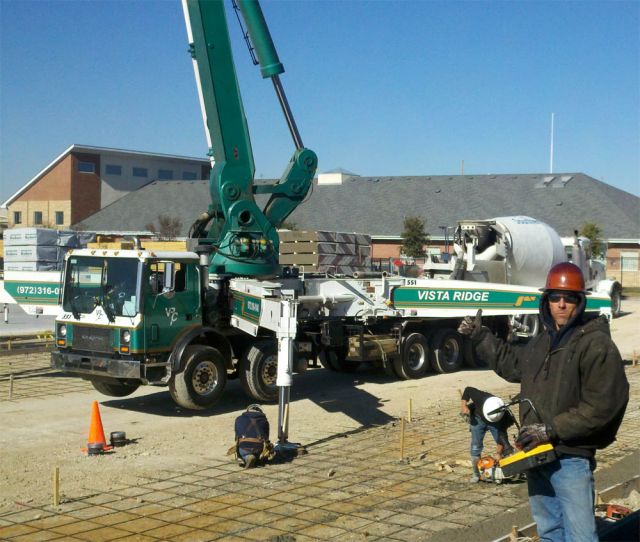
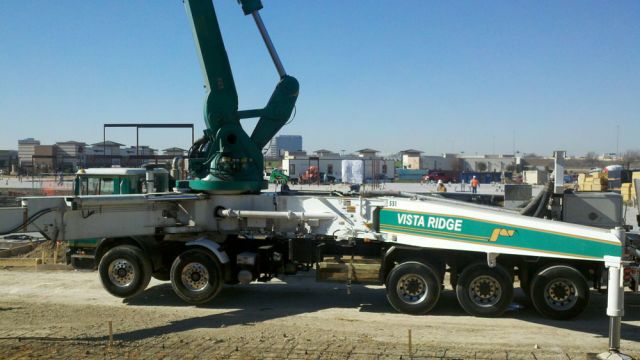
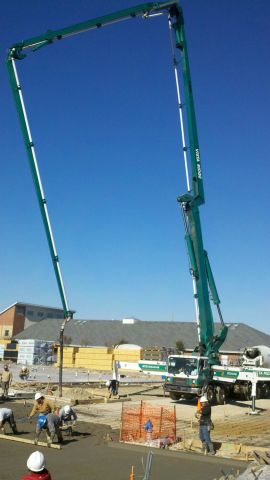
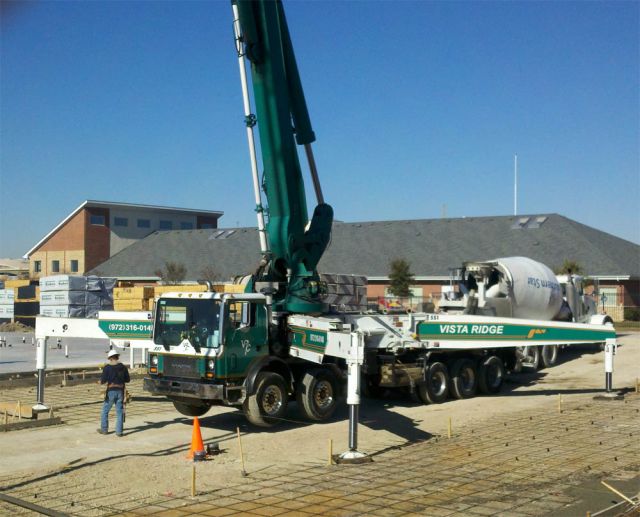


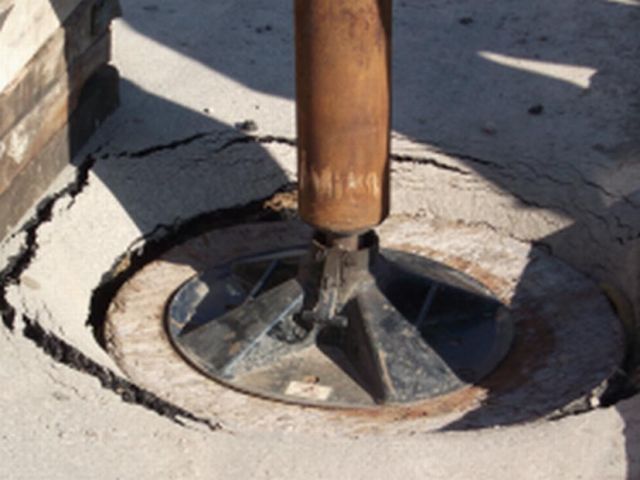
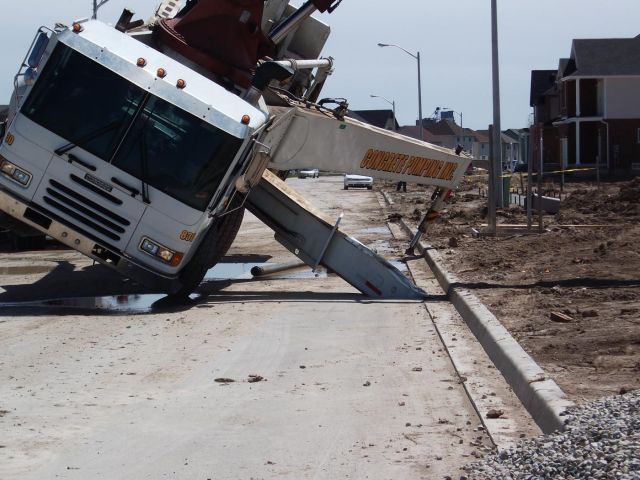
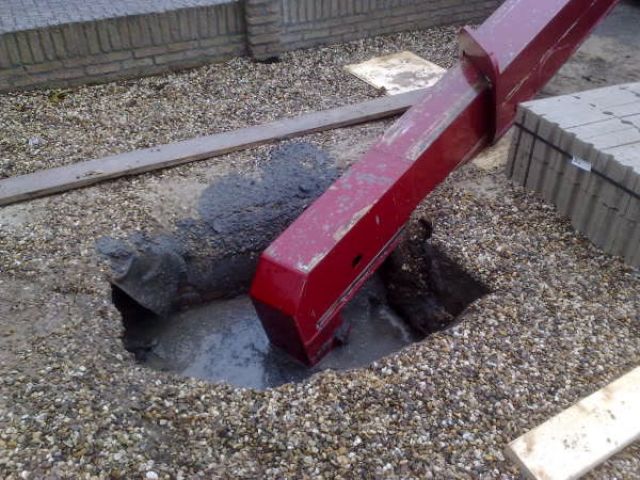
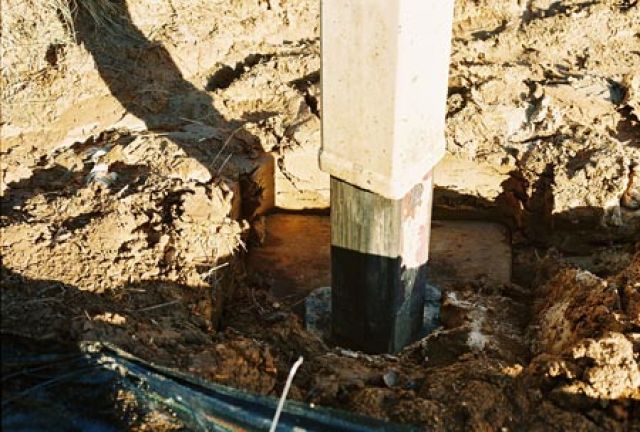



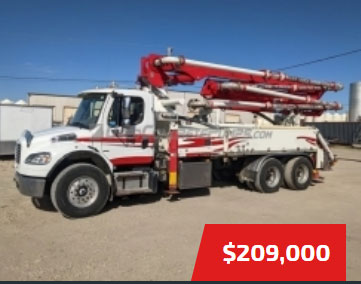








.jpg)
.gif)

.jpg)









.jpg)
